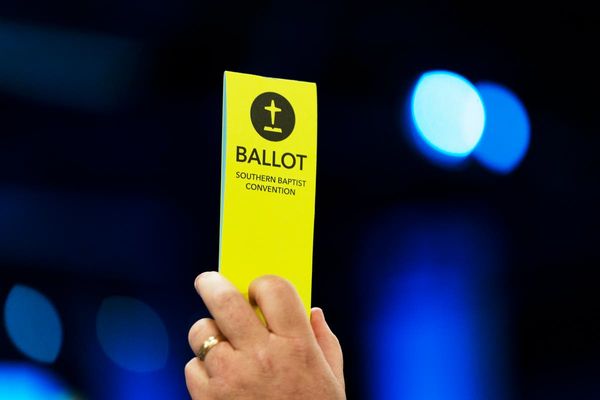
Australian teachers are already using artificial intelligence tools like ChatGPT in the classroom, frequently using the technology to come up with lesson materials, provide feedback to students and even to teach subjects that they’re not familiar with.
As the introduction of widely available generative artificial intelligence models has started to disrupt industries around the world, few have been more immediately impacted than education. Widespread concern about how students are using AI models like ChatGPT to “cheat” has led to the majority of Australia’s states and territories banning their use in public school classrooms.
Meanwhile, teachers who’ve embraced the technology, speaking under pseudonyms to Crikey without permission from their respective education departments, found that ChatGPT and other artificial intelligence models are helping them do their jobs.
Ethan has started using ChatGPT to complete repetitive, non-creative and resource-intensive tasks like rubrics for assignments.
“It turns something that might have been a 20- to 30-minute task into something that takes less than five and those savings add up,” he said in a message to Crikey.
“[Assignment rubrics] aren’t hard to write but are time-consuming if being made from scratch. ChatGPT usually does a great job of listing the requirements and different standards of accomplishment; only a few minor tweaks are needed, if any.”
Prior to ChatGPT, Ethan said, many teachers would try to find previously constructed rubrics, alter previous rubrics or even buy them online. Now, he can use it to generate an entirely new rubric instead. But, he warned, ChatGPT’s propensity to “hallucinate” facts means he will manually tweak it or give the AI follow-up prompts to refine its output.
“We don’t need to reinvent the wheel every time we go for a drive, but we do need to know that we shouldn’t drive on a flat tyre. ChatGPT will quite happily and confidently hand you the keys to a car with triangular wheels and let you drive away if you don’t know what you’re doing,” he said.
Isabella is a second-year teacher in her mid-20s who uses ChatGPT to help her brainstorm ways to help her teach English and Media classes. She’ll ask the AI chatbot for ideas — “how to present chapter questions for [book] engagingly” — and use that as a jumping-off point for her own preparation.
She also has begun to rely on ChatGPT to help her give feedback to students. She’ll upload an essay into ChatGPT and get feedback on things like punctuation, spelling and grammar, before going in and adding in her own personalised feedback on the student’s clarity of ideas, for example.
“It gets incredibly tedious writing more or less the same thing, 15 times per class. And correcting those things is something computers have been doing for a very long time, just in the form of red and blue lines,” she said, referring to word processing software’s in-built spelling and grammar check functions.
As well as using ChatGPT to help him brainstorm and consolidate his ideas into a lesson plan, Jarred, who works in alternative education, said that he will sometimes lean on ChatGPT to give him feedback on his own plans.
“I had considered using Monopoly to demonstrate a concept and it actually told me it would probably not be engaging so I ended up using a different game,” he said.
Charlotte, a high school teacher in regional Victoria, first started using ChatGPT at the beginning of this school year and has now incorporated it into classes like Legal Studies, English, History and Computer Programming.
“As teachers we are extremely time-poor, and I immediately recognised its potential,” she said.
Charlotte has explored a variety of ways to use artificial intelligence to create resources that prompt students’ learning: “I have been using ChatGPT for constructing worksheets, instantly extracting quotes from novels and films, building essay examples to model for the students, and formulating questions for class discussion.”
She’s even used it to supplement her knowledge when teaching less familiar subjects. Charlotte used ChatGPT to create a teaching unit for her that combined an easy-to-build computer kit called Arduino with the game Minecraft, despite professing to having “very little knowledge” in that area.
“It prints the exact codes I need and also provides a step-by-step process for using it all,” she said.
All the teachers who spoke to Crikey said ChatGPT could improve teaching quality by saving time that could be better spent on other aspects of teaching. Isabella said that she imagined teachers could expand their curriculums to include a wider selection of more exciting and contemporary texts because it would be less of a burden to create resources for them.
“Hell, Animal Farm definitely isn’t the only text that explores the themes of corruption, power, and education, but we keep using it because it’s easy,” she said.
“Chapter questions for Animal Farm are a dime-a-dozen and all over the internet. Chapter questions for an Australian text are almost guaranteed to not exist. For already time-poor teachers, it only makes sense to save yourself the hassle.”
Jarred said that ChatGPT isn’t a replacement for teachers, and that even learning how to use the AI bot is a skill: “Like anything data related, it’s a junk in, junk out process, so it still requires good inputs and thinking from the teacher to be useful.”
Several of them said that they had introduced other teachers and students to ChatGPT as a learning resource. Ethan has brought together some teachers at his school to develop training for other staff about how to effectively use it as part of their teaching. But he did identify potential pitfalls about its use if not handled carefully.
“We are aware of how easily these tools could be used as a crutch by a time-poor teacher under the pump and the lure of simply giving the AI a prompt and using the response without consideration of the weaknesses in the programs,” he said.
Most of them said they’re not worried about students using ChatGPT instead of learning, citing the existence of previous AI tools like QuillBot (which automatically rewrites an essay to avoid plagiarism detection) and the obvious issues with quality.
“ChatGPT is definitely impressive but for those who are worried, I bet you to try using it for a topic that you’ll know well. Ask it to make any sort of flowchart and you’ll get a chuckle,” Isabella said.
Ultimately, Isabella views ChatGPT and its competitors as both beneficial and inevitable changes to the teaching profession.
“Overall, I view it hopefully, and with the view that if spell check can be used, then why not something like ChatGPT? It’s in the world now. It exists. It’s not going to un-exist. May as well teach students how to use it well, and when to use it,” she said.







